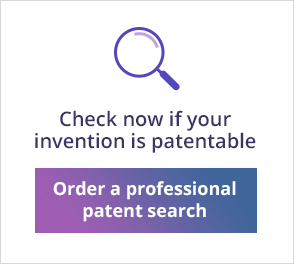
A well-known saying states that “amateurs rely on luck and hard work, professionals on knowledge, experience and effective work” or as Abraham Lincoln phrased it – “If I had nine hours to cut down a tree, I would spend six hours sharpening my axe” The first step in the long and complicated journey of getting a patent is an independent on line search followed by a professional patentability search (also known as – Novelty search and Prior art search).
The cost of a patentability search is only a small part of the cost of drafting and filing a patent in several countries (which can reach tens of thousands of pounds), but beyond that there are significant differences between self-search and a professional search.
1. Technological knowledge and experience in all types of search tools and databases
Novelty is the first main condition that an invention must meet in order to be patentable. People mistakenly think that existing products or other publications don’t stop them from obtaining a patent. A common mistake of inventors is to develop a product and then advertise it online with the thought that they can later get a patent. Another mistake is to think that only because there is no patent for an existing product in another country, they may get a patent and obtain exclusivity in their own country.
The truth is utterly different – any previous publication of the invention, anywhere in the world, in any possible way deem the invention as not novel and therefore as not patentable! A foreign patent (even from a century ago), a patent application (abandoned or in the process of examination), a product marketed anywhere in the world, the publication of a product that no longer exists, a scientific article, and even a sufficiently detailed web post – all considered as prior art – ie. previous publication meaning the invention can’t be patented!
Hence, in order to determine if an invention is patentable – the first action is a comprehensive search of all possible search databases (internet web, patent databases, professional literature and more). A professional patent searcher has the technical knowledge to conduct such a thorough search using search methodologies, queries using Boolean Operators and dedicated search tools and databases.
2. Legal knowledge in the field of patents – The ability to differentiate between relevant findings and those that are not
Another condition that an invention must meet is – inventive step (known as non-obviousness) i.e., it must contain an element that “is not obvious to a person skilled in the art”. The concept of “inventive step” is complex and sometimes vague. Patent examiners sometimes reject a patent application under this section in view of the existence of several findings that individually are not identical to the invention, but together prove that the invention has no inventive step. This is where the legal knowledge in the field of intellectual property of patent searchers comes into play.
During a search you will come across many publications that are similar / close to the invention. Technological understanding is not sufficient to determine whether they might prevent you from getting a patent or not (i.e. whether the invention has an inventive step over these existing publications). This is even more evident when it comes to analyzing and examining existing patents and patent applications. Many patents are phrased in professional jargon – a formal and complicated legal language – that is not always clear to inventor’s eyes.
The professional patent searcher has the knowledge and experience to analyze the findings, understand their essence, compare them with the invention and conclude whether they are relevant or not.
3. Use of paid patent databases and search engines – access to information that is not in the public domain
As noted above, the patent laws state that any prior publication of the invention prevents it from becoming a patent and that an invention must contain an inventive step to be patentable. In order to make sure that there are no previous publications that are identical to the invention or close to such an extent that it has no inventive step over them, one should also look in databases that are not accessible to the general public (those that specialize in patents, and others such as professional literature databases).
Moreover, many patent databases (such as Orbit Questel, Patbase and others) are powerful search engines with search capabilities that are not available in the free tools (translation capabilities, drawings display, classification search etc.). In fact, patent examiners themselves use these types of tools. Often inventors who are satisfied with an independent search using free tools, are surprised to find that their application is rejected based on a foreign and old patent that the examiner found in a short search in a professional database…
4. Objectivity and other added value
A professional patentability search has added value beyond all the above. Many inventors are so focused on their invention that they become blind to publications that an objective eye of a professional can easily locate. For this reason, professional search is a valuable tool in the process of recruiting investors.
Second, because a professional patentability search report is designed to predict the answer of the patent examiner, even if it is negative (i.e., no findings are found that prevent patent registration) it will help the inventor and his patent attorney in the drafting phase. This is even more true with reports containing identical or similar findings – Instead of investing a lot of time and money on an application that will be rejected, the inventor can “return to the drawing board” and try to change the invention in a way that makes it patentable (in these cases It is important to conduct a new search).
Beyond these benefits, a good patentability search report can help in the development stage (thanks to the technological review it provides) and in some cases even give an initial freedom to operate picture (old and expired patents will indicate a high chance of freedom to operate, while enforced patent my indicate on potential legal inhibitions that must be dealt with in the future)
Summary and conclusion
The first step after coming up with an invention is a serious and thorough self-search, however even if the search in the free databases did not yield identical publications, a professional search is irreplaceable. Such a search will:
- Dramatically reduce the risk of filing a premature patent application that will be rejected (wasting a lot of money and critical time) and risk future attempts of getting patents rights.
- Assist in drafting a mature patent application and in the future develop the idea into production and bring it to market.
- Increases the chance of getting a patent right that provides the best and most extensive protection for the invention.

